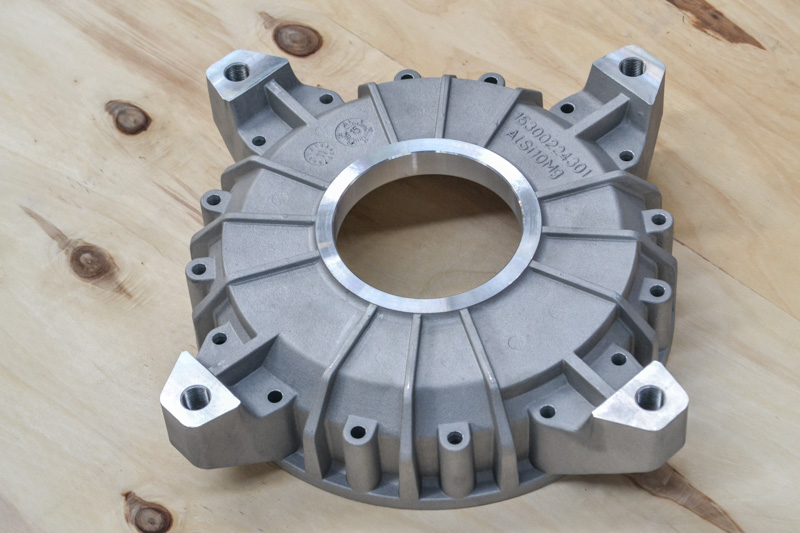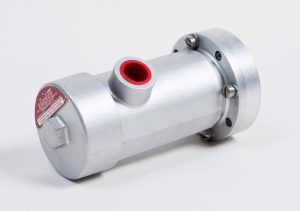How Aluminum Foundry expertise ensures long-lasting performance
Just How Aluminum Foundry Adds To Ingenious Solutions in Metal Manufacture
Aluminum factories greatly affect the landscape of steel fabrication. They embrace advanced casting techniques that improve precision and layout versatility. This capacity permits for the manufacturing of lightweight and sturdy parts that deal with diverse sector requirements. The assimilation of automation and lasting techniques establishes a standard for effectiveness. As these shops progress, they elevate concerns about the future of production and the role of advancement in forming the industry.
The Duty of Aluminum Foundries in Modern Manufacturing
Aluminum shops play a vital duty in modern-day manufacturing, adding significantly to numerous markets, consisting of automobile, aerospace, and durable goods. These centers concentrate on the melting and spreading of light weight aluminum, changing resources right into high-grade components that meet rigid industry standards. The light-weight yet solid residential properties of Aluminum make it an excellent selection for producers aiming to boost efficiency while reducing weight, specifically in the auto field, where fuel performance is paramount.
Furthermore, Aluminum factories utilize innovative processes to produce complex shapes and layouts that cater to specific market needs. By leveraging advanced technologies such as computer-aided style and simulation, these factories can optimize their production processes and boost material usage. This not just enhances the high quality of the end products but additionally decreases waste, adding to more sustainable manufacturing techniques. Ultimately, the contributions of Aluminum factories are crucial for driving advancement and efficiency across numerous fields.
Advanced Casting Techniques Transforming Steel Fabrication
Advanced spreading strategies are transforming the area of metal manufacture, particularly through accuracy spreading approaches that enhance accuracy and decrease waste. Cutting-edge alloy growths are likewise playing a crucial function, allowing for tailored residential properties and improved performance in numerous applications. With each other, these innovations are establishing brand-new standards in performance and high quality within Aluminum shops.
Accuracy Spreading Techniques
As the need for high-grade components in different sectors proceeds to rise, accuracy spreading approaches have arised as a transformative force in steel construction. These strategies, consisting of financial investment spreading, lost foam spreading, and pass away spreading, permit for detailed geometries and tight resistances that typical approaches often battle to accomplish. By utilizing advanced products and innovations, accuracy casting minimizes waste and boosts efficiency, making it possible for suppliers to generate complex parts with reduced lead times. In addition, these techniques supply premium surface coatings and mechanical homes, making them optimal for sectors such as aerospace, automobile, and medical gadgets. As suppliers significantly take on precision casting, the capability to satisfy particular style demands while keeping cost-effectiveness becomes a pivotal benefit in today's competitive market.
Cutting-edge Alloy Advancements
Cutting-edge alloy developments are improving the landscape of steel fabrication, especially within the domain name of precision casting. Developments in material science have actually resulted in the development of specialized Aluminum alloys that enhance toughness, sturdiness, and resistance to corrosion. These unique alloys allow foundries to produce intricate elements with enhanced mechanical homes, providing to varied markets such as aerospace, automobile, and electronic devices. The consolidation of innovative casting techniques, consisting of die casting and sand casting, more maximizes making use of these materials, permitting complex geometries and lowered waste. Therefore, makers are better furnished to meet strict efficiency criteria while lessening environmental impact. Eventually, these innovative alloys are leading the way for a brand-new era of performance and sustainability in steel fabrication.
Sturdy and lightweight: The Advantages of Aluminum Components
Aluminum components provide significant advantages in various applications due to their light-weight nature and durability. This combination adds to boosted gas performance, especially in the vehicle and aerospace industries. Additionally, light weight aluminum's fundamental deterioration resistance additionally expands the life-span of products, making it a preferred choice in many metal construction procedures.
Improved Gas Performance
While conventional products have long been the standard in different sectors, the change towards Aluminum elements is reinventing the landscape of metal fabrication, especially in relationship to enhanced fuel effectiveness. Light weight aluminum's lightweight nature especially reduces the general weight of cars and equipment, permitting improved efficiency and minimized power intake. This decrease in weight translates straight to lower gas consumption, making Aluminum an attractive alternative for makers aiming to fulfill rigid environmental policies. On top of that, light weight aluminum's toughness assurances that components keep their honesty with time, adding to long-term performance. As industries significantly focus on sustainability, the fostering of Aluminum parts becomes a tactical choice, aligning operational goals with ecological obligation while boosting fuel performance in various applications.
Deterioration Resistance Benefits
One of the standout functions of Aluminum elements is their outstanding deterioration resistance, which significantly enhances the durability and integrity of different applications. This property is specifically helpful in severe atmospheres, such as marine and commercial settings, where direct exposure to moisture and chemicals can bring about substantial destruction in various other metals. Unlike steel, Aluminum naturally develops a safety oxide layer that serves as an obstacle versus environmental components, lessening the risk of corrosion and rust. As an outcome, Aluminum components call for less maintenance and have a longer life span, making them a cost-efficient choice for suppliers. This intrinsic longevity not only contributes to the general performance of items however also sustains sustainability efforts by lowering the demand for frequent substitutes.
Advancements in Layout and Design Through Aluminum Foundries
As developments in Aluminum Foundry modern technology remain to reshape the landscape of metal manufacture, ingenious style and engineering remedies are arising to meet the demands of varied markets. The adaptability of Aluminum enables elaborate designs that were previously unattainable with conventional products. Shops are leveraging computer-aided layout (CAD) software and simulation devices to optimize the layout process, enabling engineers to create light-weight yet durable components customized to particular applications.
The capacity to incorporate sophisticated alloying strategies permits the customization of Aluminum buildings, enhancing stamina and toughness. This adaptability promotes creativity in item advancement, allowing firms to experiment with new shapes and frameworks that improve capability while decreasing weight. Joint efforts in between designers and foundries help with quick prototyping, resulting in shorter task timelines and increased total performance. These innovations not only boost product performance but additionally drive sustainability by minimizing material waste during the manufacture procedure.
Enhancing Performance With State-Of-The-Art Modern Technology
Developments in modern modern technology are revolutionizing the effectiveness of Aluminum foundries, simplifying procedures from layout to manufacturing. Automation plays an essential duty, with robotic systems enhancing the speed and accuracy of jobs such as molding, putting, and ending up. These automated remedies reduce human error and lower labor expenses, while also boosting output consistency.
In addition, the integration of innovative software for computer-aided layout (CAD) and simulation permits fast prototyping and testing, expediting the shift from idea to production. Shops are utilizing real-time data analytics to monitor procedures, making certain peak efficiency and minimizing downtime.
3D printing modern technology is being embraced for producing complex molds and components, decreasing product waste and lead times. The mix of these innovative technologies not only boosts performance but also improves the top quality of Aluminum products, placing factories at the forefront of development in steel manufacture.
Sustainable Practices in Aluminum Foundries
An expanding number of Aluminum factories are adopting sustainable techniques to minimize their environmental effect and advertise source efficiency. Metal Castings. These shops are progressively implementing recycling programs, where scrap Aluminum is accumulated and reprocessed, substantially minimizing waste. Additionally, energy-efficient technologies, such as electrical heating systems and advanced insulation products, are being made use of to lower energy intake throughout the melting procedure
Water preservation techniques are also obtaining traction, with lots of factories recycling water in cooling down systems to minimize general use. The fostering of environment-friendly finishes and ingredients decreases hazardous discharges without endangering item top quality.
Future Fads in Aluminum Spreading and Metalworking
Significantly, the future of Aluminum spreading and metalworking is being formed by technical advancements and evolving sector criteria. Developments in automation and robotics are enhancing processes, boosting precision, and decreasing labor prices. The adoption of additive production techniques, such as 3D printing, is changing traditional spreading techniques, allowing for complex geometries and reduced material waste.
The assimilation of man-made intelligence and information analytics is allowing real-time monitoring and anticipating upkeep, which enhances manufacturing efficiency. Sustainability stays a core emphasis, with companies buying green practices, including the recycling of Aluminum scrap and making use of eco-friendly power resources in manufacturing.
As the need for lightweight, resilient products in numerous sectors boosts, Aluminum foundries have to adjust by developing cutting-edge alloys and improving casting strategies. These fads collectively indicate a future where Aluminum spreading and metalworking are more reliable, sustainable, and responsive to market requirements.

Regularly Asked Inquiries
What Sorts Of Aluminum Alloys Are Commonly Used in Foundries?
Commonly used Aluminum alloys in factories include 2xxx collection (copper), 3xxx collection (manganese), 4xxx collection (silicon), 5xxx collection (magnesium), and 6xxx collection (magnesium and silicon), each offering one-of-a-kind homes suitable for various applications.
Just How Does Aluminum Spreading Compare to Various Other Metal Manufacture Techniques?
Aluminum casting offers benefits such as reduced manufacturing costs and intricate forms compared to typical manufacture approaches. It supplies superb dimensional accuracy and surface coating, making it a recommended choice for lots of industries over options like machining or welding.
What Precaution Are Applied in Aluminum Foundries?
Aluminum factories carry out numerous precaution, including personal safety equipment, ventilation systems, regular safety training, threat here analyses, and emergency situation methods to protect workers from threats linked with liquified steel, warm, and possible chemical direct exposure. Metal Castings.
Just How Can Business Locate Trustworthy Aluminum Foundry Allies?
Business can recognize reputable Aluminum Foundry partners by reviewing sector reputation, assessing client reviews, appraising quality certifications, taking into consideration manufacturing abilities, and performing website visits to ensure placement with their specific requirements and standards.

What Is the Regular Lead Time for Aluminum Spreading Projects?
The normal preparation for Aluminum casting projects ranges from two to 8 weeks, depending on factors such as design complexity, manufacturing volume, and the factory's ability to meet particular task demands and timelines.
Aluminum shops play an important duty in contemporary production, contributing substantially to numerous markets, consisting of automobile, aerospace, and consumer items. As advancements in Aluminum Foundry modern technology proceed to improve the landscape of metal construction, ingenious design and design options are arising to meet the needs of varied industries. Innovations in cutting edge technology are transforming the performance of Aluminum factories, simplifying procedures from layout to production (Metal Castings). An expanding number of Aluminum shops are taking on sustainable methods to reduce their ecological influence and promote source effectiveness. As the need for light-weight, resilient products in numerous markets increases, Aluminum shops should adjust by enhancing and developing cutting-edge alloys spreading techniques